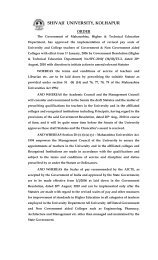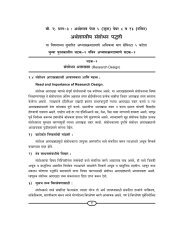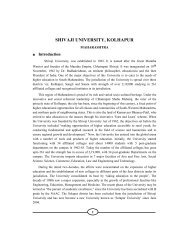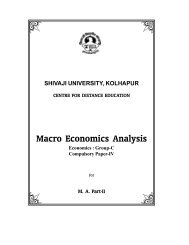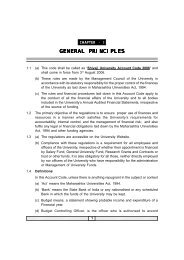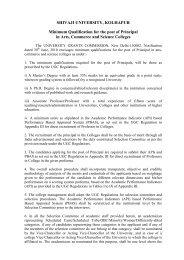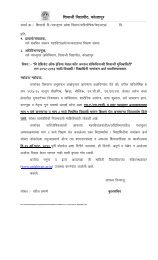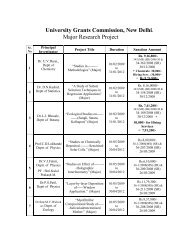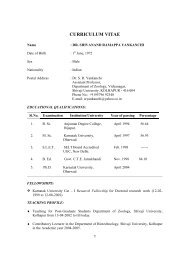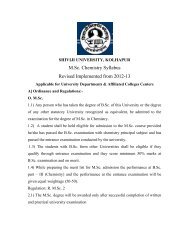Economics(Paper-4) - Shivaji University
Economics(Paper-4) - Shivaji University
Economics(Paper-4) - Shivaji University
Create successful ePaper yourself
Turn your PDF publications into a flip-book with our unique Google optimized e-Paper software.
Tentative Take-off years of Selected Countries<br />
Country Take-off Country Take-off<br />
Great Britain 1783-1802 Russia 1890-1914<br />
France 1830-1860 Canada 1896-1914<br />
Belgium 1833-1860 Argentina 1935<br />
United States 1843-1860 Turkey 1937<br />
Germany 1850-1873 India 1952<br />
Sweden 1868-1890 China 1952<br />
Japan 1878-1900<br />
The above table shows that in Great Britain, France, Belgium and United States,<br />
the take-off occurred during the last quarter of the 18 th century and the first half of the<br />
19 th century. Germany. Sweden and Japan experienced take-off in the latter half of the<br />
19 th century. In Russia and Canada, the take-off occurred before the outbreak of first.world<br />
ware. Argentina, Turkey, India and China appear to be in the midst of take-off stage<br />
4. Drive to Maturity:<br />
According to Rostow, “the period when a society has effectively applied the range<br />
of modern technology to the bulk of its resources”. In this stage many technical changes<br />
takes place, industrial development gets differentiated, new leading sectors gather<br />
momentum and the old leading sectors face extinction. The leading sectors like cotton<br />
textile industries railways, coal and heavy engineering industries, etc. lose their<br />
momentum and new sectors such as steel, ship-building, chemicals, electricity,<br />
machine-tools etc. appear to dominate the economy, and sustain overall growth. 10 to<br />
20 per cent of the national income is reinvested and the growth of output regularly<br />
outstrips the increase in population. Dependency of peoples on agriculture sector<br />
diminishes. Increases industrial activities, trade expanses, social changes occur in<br />
large manner etc. changes take place in this stage.<br />
5. Age of High Mass-Consumption:<br />
From Maturity the economy moves to the age of high mass-consumption. Being<br />
fed up with the fruits of industrial maturity, the people try to seek more leisure, more<br />
welfare and social security, etc. In this period resources are directed on a large scale to<br />
the production of durable consumer goods and services. This period is considered as<br />
an era of consumer’s sovereignty.According to Rostow, Western Europe and United<br />
States reached this stage in the beginning of the 1901. Great Britain reached this stage<br />
in 1930’s and Japan in 1950’s.<br />
Rostow believed that resources employed in the following three directions could<br />
123456789012345678901234567890121234567<br />
123456789012345678901234567890121234567<br />
16<br />
123456789012345678901234567890121234567<br />
123456789012345678901234567890121234567<br />
123456789012345678901234567890121234567<br />
123456789012345678901234567890121234567<br />
123456789012345678901234567890121234567<br />
123456789012345678901234567890121234567



